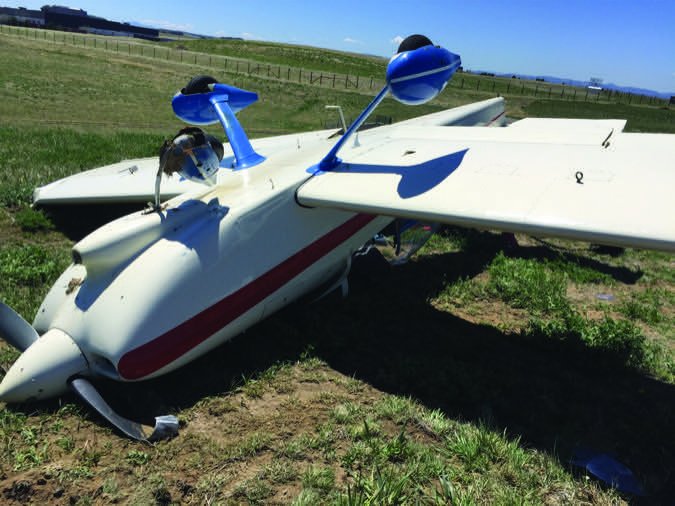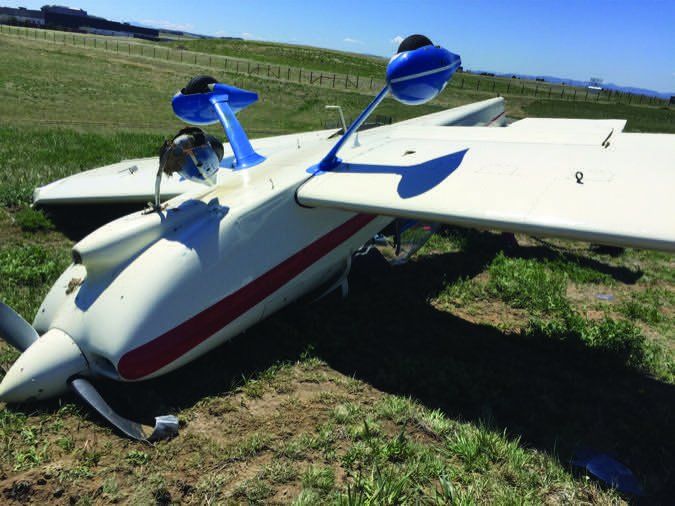Hanging upside down in a three-point harness certainly gives you a new perspective on flying. Especially if you are on the ground, in the grass, beside the runway. My first thought was unprintable, but my second thought was, “How did that just happen?”
I had just bought a Van’s experimental RV-8A, and I was still learning the new controls and flight characteristics. I had just six hours in type and was landing at my home field, at 6000 feet msl elevation. The RV-8A is a faster, aerobatic plane with shorter wings and higher wing loading than the RV-12 I had most recently used, and I was still learning how quickly it would quit flying in the flare unless I kept my speed up and some power on.
This particular landing featured a 10-knot crosswind and as I transitioned from crab to wing-low and straightened out for landing, my sink rate was too high. I pushed on the throttle, but nothing happened. There was one hard bounce, then a slow-motion nightmare of nose gear collapse, bending prop and a slide off the runway into the grass. Funny how quickly things can change.
The fire department jacked up the inverted plane so I could crawl out of the broken canopy. Thankfully, there was no fuel leak or fire, and it all happened at my home airport.

In retrospect, the “throttle lever” on the left side panel was really the mixture lever. The throttle lever was two levers over, beyond the prop lever. During takeoffs and en route operation, I had no trouble finding the throttle with a quick glance. But I had not yet developed the proper muscle memory, and reaching blindly during my flare for the first lever was not the right choice. I knew the first 100 hours in a new plane are the highest risk and purposefully had no passenger in the plane. There was no one to blame but myself.
I learned that the tower controllers really are there to help and that our planes are very fragile, designed to operate within narrow tolerances.
I hope to not quit flying, but I am still in the shell-shocked phase. Dealing with insurance, NTSB and the FAA is all quite distressing. Looking back, I see that practicing go-arounds multiple times (10 or more times) would have led to the correct muscle memory for a new set of controls, and a right-side-up landing.




